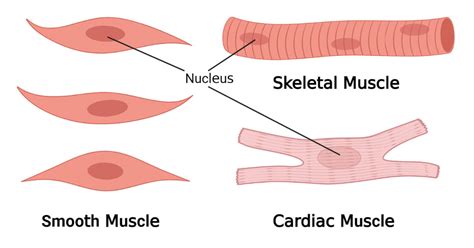Tactics to shatter strength plateaus for peak muscle and power gains?

Understanding and Breaking the Strength Plateau Cycle
Every dedicated lifter eventually encounters the dreaded strength plateau – a frustrating period where progress grinds to a halt despite consistent effort. This isn’t a sign of failure but a natural adaptation by your body to the training stimulus. To shatter these plateaus and continue making significant muscle and power gains, you need to strategically adjust your approach, moving beyond simply adding more weight.

Redefining Progressive Overload: Beyond Just Weight
Progressive overload is the fundamental principle of muscle growth, but it’s often misunderstood as solely increasing the load. While adding weight is crucial, it’s just one facet. When you hit a plateau, consider these alternative methods of progressive overload:
- Increase Volume: Add more sets or reps to your routine. For example, if you typically do 3 sets of 5 reps, try 4 sets of 5, or 3 sets of 6-7 reps with the same weight.
- Increase Frequency: Train a muscle group more often. Instead of hitting chest once a week, try twice, allowing for more exposure to the stimulus.
- Improve Form and Range of Motion: Performing an exercise with stricter form or a greater range of motion can make a given weight feel heavier and more challenging, leading to new adaptations.
- Decrease Rest Times: Reducing the rest period between sets increases the intensity and metabolic stress, promoting hypertrophy.
- Increase Time Under Tension (TUT): Slow down the eccentric (lowering) phase of a lift or incorporate pauses at challenging points to extend the muscle’s working time.
Strategic Periodization: Cycling Your Training
Periodization involves systematically varying your training program over time to prevent overtraining, optimize performance peaks, and continuously provide a novel stimulus. Instead of relentlessly pushing for PRs every week, cycle through different phases:
- Linear Periodization: Gradually increase intensity (weight) and decrease volume (reps/sets) over several weeks or months, culminating in a strength peak. Then, deload and restart with higher volume/lower intensity.
- Undulating Periodization (Daily/Weekly): Vary intensity and volume more frequently, sometimes daily or weekly. For example, one day could be heavy and low rep, another moderate and higher rep, and a third focused on power. This keeps the body guessing and prevents adaptation to a single stimulus.
- Block Periodization: Focus on specific training goals (e.g., hypertrophy, strength, power) in distinct blocks, allowing for specialized adaptation before moving to the next.

Optimize Recovery and Strategic Deloads
Often, a plateau isn’t due to a lack of effort but a lack of recovery. Your body needs time to repair and adapt. Implementing strategic deload weeks is critical:
- Scheduled Deloads: Every 4-8 weeks, reduce your training volume and/or intensity significantly (e.g., 50-60% of your usual load/volume) for a week. This allows your central nervous system and muscles to recover, often leading to renewed strength and progress afterward.
- Prioritize Sleep: Aim for 7-9 hours of quality sleep per night. Muscle repair and hormone production (like growth hormone and testosterone) are highest during sleep.
- Active Recovery: Light cardio, stretching, or foam rolling on off days can improve blood flow and aid recovery without adding further stress.

Targeting Weak Links and Incorporating Accessory Work
Plateaus can often be traced back to a specific weak link in the kinetic chain. Identify which muscles or movements are lagging and incorporate targeted accessory work:
- Assess Your Lifts: Film yourself or have a training partner observe your form during your main lifts (squat, bench, deadlift). Where do you typically fail or struggle?
- Example Weak Links: If your bench press stalls, perhaps your triceps or anterior deltoids are weak. Incorporate close-grip bench press, overhead triceps extensions, or dumbbell shoulder presses. If your deadlift is weak off the floor, work on deficit deadlifts or pause deadlifts.
- Unilateral Training: Incorporate single-limb exercises (e.g., single-leg squats, dumbbell rows) to address muscular imbalances and improve stability.

Advanced Intensity Techniques for a New Stimulus
Once you’ve mastered the basics and are struggling to progress, advanced intensity techniques can provide a powerful new stimulus, but use them sparingly and strategically:
- Drop Sets: After completing a set to failure, immediately reduce the weight by 20-30% and continue for more reps until failure. Repeat 1-2 times.
- Supersets/Compound Sets: Perform two exercises back-to-back with no rest. Supersets typically involve opposing muscle groups (e.g., bicep curl and tricep extension), while compound sets target the same muscle group (e.g., bench press followed by dumbbell flyes).
- Rest-Pause Training: Perform a set to failure, rest for a brief period (10-20 seconds), then perform a few more reps with the same weight until failure again.
- Eccentric Overload: Focus on slowing down the lowering (eccentric) phase of an exercise, which can cause more muscle damage and lead to greater strength gains.

Nutrition, Hydration, and Mindset
No training program, however perfect, can overcome poor nutrition and a negative mindset. Ensure you are adequately fueling your body for recovery and growth:
- Caloric Intake: Ensure you are eating enough calories to support muscle growth, especially if your goal is hypertrophy and strength. A slight caloric surplus is often necessary.
- Protein Intake: Consume sufficient protein (1.6-2.2g per kg of body weight) to support muscle repair and synthesis.
- Hydration: Dehydration significantly impairs performance and recovery. Drink plenty of water throughout the day.
- Mental Toughness: Overcoming plateaus requires patience and a willingness to push through discomfort. Believe in your ability to adapt and grow.
Conclusion: The Art of Adaptation
Breaking strength plateaus isn’t about working harder endlessly; it’s about working smarter and understanding the intricate balance between stimulus and recovery. By strategically varying your progressive overload methods, implementing periodization, prioritizing recovery, addressing weaknesses, and utilizing advanced techniques wisely, you can consistently challenge your body, shatter previous limits, and unlock unprecedented muscle and power gains. Listen to your body, stay consistent, and embrace the process of continuous adaptation.








